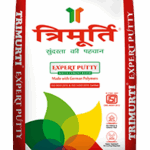
In the era of social media, user-generated content (UGC) has become a significant part of online interactions. However, ensuring the protection and integrity of UGC poses unique challenges. Digital rights management (DRM) and video watermarking techniques offer valuable solutions for safeguarding user-generated content on social media platforms. In this article, we will explore the importance of DRM and video watermarking in protecting UGC and maintaining the rights of content creators.
- Preserving Content Ownership
User-generated content often includes original creations, such as videos, images, or written works. DRM and video watermarking provide mechanisms to preserve the ownership and copyrights of UGC. By applying watermarking techniques, content creators can embed invisible identifiers within their content, establishing a traceable link back to the original creator. This discourages unauthorized use, plagiarism, and copyright infringements.
- Mitigating Unauthorized Sharing
Social media platforms facilitate the rapid dissemination of UGC, making it susceptible to unauthorized sharing and misuse. DRM and video watermarking help mitigate these risks by enabling content owners to track and monitor the distribution of their UGC. Watermarking the content with unique identifiers allows creators and platform administrators to identify the source of unauthorized sharing and take appropriate actions to enforce copyright and usage restrictions.
- Deterrent Against Content Theft
UGC on social media platforms is vulnerable to content theft, where individuals or entities claim ownership of someone else’s creations. DRM and video watermarking act as deterrents against content theft by providing evidence of ownership. Watermarked content serves as proof of originality, enabling content creators to assert their rights and protect their UGC from unauthorized exploitation.
- Enabling Proper Attribution
Proper attribution is essential in recognizing and crediting the creators of UGC. Watermarking techniques can include information such as the creator’s name, website, or social media handle. This allows viewers and users to identify the original source of the content and provide appropriate attribution when sharing or reusing the UGC. DRM systems can enforce the display of watermarks, ensuring that proper attribution accompanies the content across social media platforms.
- Supporting Content Monitoring and Takedown
With the vast amount of UGC being shared on social media, monitoring and detecting infringing or inappropriate content can be challenging. DRM and video watermarking assist in content monitoring by providing automated systems to identify watermarked content. These systems can detect instances of unauthorized use, track the spread of UGC, and enable swift takedown procedures to remove infringing or objectionable content from the platform.
- Empowering Content Creators
DRM and video watermarking empower content creators by giving them control over their UGC on social media platforms. By utilizing these technologies, creators can safeguard their creations, maintain their rights, and enforce usage permissions. Watermarking also serves as a branding opportunity, allowing creators to promote their personal or professional identity through their UGC. This empowerment fosters creativity, encourages content production, and supports the growth of online communities.
In conclusion, DRM and video watermarking techniques play a vital role in protecting user-generated content on social media platforms. By preserving content ownership, mitigating unauthorized sharing, deterring content theft, enabling proper attribution, supporting content monitoring and takedown, and empowering content creators, DRM and watermarking technologies establish a secure and trustworthy environment for UGC. As social media continues to evolve, the integration of these protective measures becomes increasingly important to maintain the rights and integrity of user-generated content.






